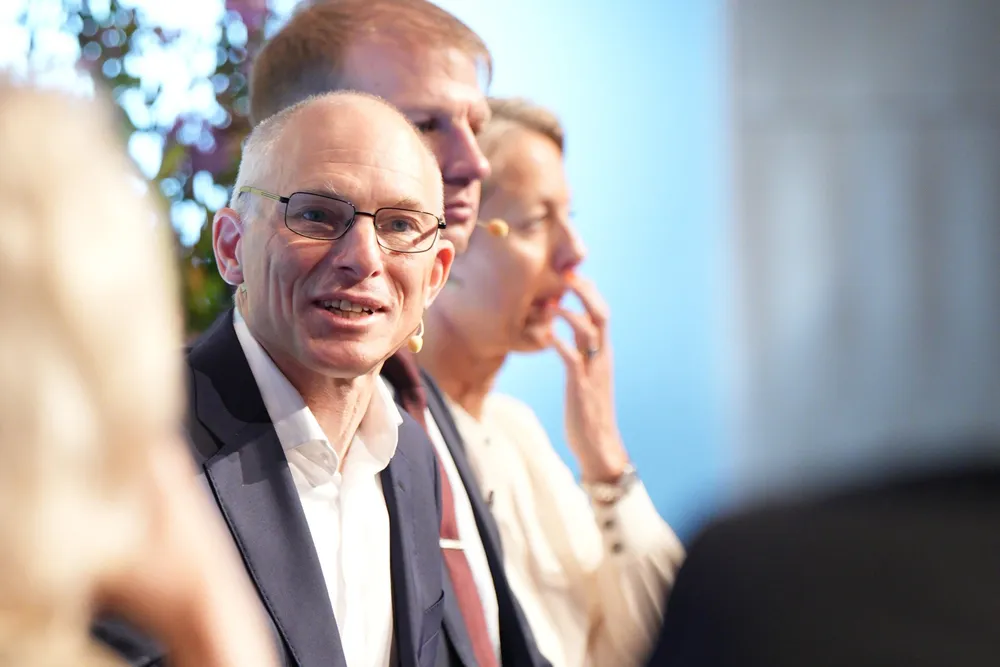'End the experiment, back CfDs': Orsted unveils plan to revive offshore wind
Europe would benefit from more alignment in its offshore wind auction designs and while CfDs are 'not the only way, they will work,' says Orsted executive

European countries must come together and pledge a decade-long pipeline of Contracts for Difference (CfDs), says senior Orsted executive Duncan Clark, as the developer launches a plan to help the sector escape the “vicious cycle” of uncertainty.
Offshore wind has suffered in recent years due to spiralling inflation, higher interest rates and supply chain pressures, with projects dropped and entire auction rounds suffering no-shows as developers struggle to make the numbers add up.
In a report launched today during the annual WindEurope event in Copenhagen, Orsted warns that the offshore wind sector is at risk of “stagnation” unless urgent action is taken to correct course.
A “credible” path out of this, said Clark, is for European governments to commit to a decade-long period to commissioning 10GW a year of CfD-backed projects from 2031 to 2040, boosted by some non-CfD projects.
“That will be a real tangible signal of volume, a statement of demand by society that they want this product.”
With this, Orsted says industry will be able to “mobilise the investment needed to meet the necessary offshore wind capacity, reduce cost of capital, and bring the industry onto an accelerated learning curve,” reducing the levelised cost of capital by 30% by 2040.
“We can do better across Europe with a bit of alignment,” said Clark. “What we've had in the past is enormous enthusiasm for offshore wind, enthusiasm for the way the costs came crashing down, enthusiasm for the potential, a whole bunch of target-setting, most of which landed on 2030.
“So we have this weird situation of an unbelievably, unrealistically high expectation of new capacity around 2030. And the supply chain looked at that and said: ‘Well, that's never going to happen.’”
This sky-high target setting has been particularly evident in the UK, where the Labour government last year pledged to quadruple offshore wind capacity to 60GW by 2030, before later retreating from that figure to a more modest – but still challenging – 43-50GW goal.
What this target setting across Europe meant was that the supply chain took the view that, “I can't tell which projects are actually going to happen, so I don't trust any of them,” said Clark.
“And if the supply chain doesn't believe that's coming through as a hard order, then it can't scale up and invest to deliver. So that's the problem we're trying to jump out of. We're trying to get out of that cycle of uncertainty by allocating the right risk with the right parties.”
On how the industry might persuade European countries that have so far stood back from CfDs – Germany, Denmark and The Netherlands being examples – to adopt this approach, Clark said industry players have to “talk through it” with them and “make clear the way in which it addresses an unmet need.”
“We've had this massive experiment of different regimes, different auction frameworks, different project delivery frameworks, and some have worked a bit better than others.”
Some countries that have not used CfDs to date have had success with other methods, stressed Clark.
“And yet there are other places at other times that have had frameworks which have done part of the job. They might have awarded seabed, but they haven't resulted in production assets in the water. So there's something that needs addressing.
“There is an unmet need. The projects are not coming through at the right pace. So what we have to do is we have to kind of show the way. It's not the only way, but this way will work.”